I try to stay out of the restoration volunteers’ way at Pima Air & Space Museum, but curiosity overcame me yesterday, so I borrowed a golf cart and drove through the fence like I owned the place, armed with a selfie stick and my trusty iPhone.
A few months ago a fleet of flat-bed semis delivered gigantic Erector Set-style metal structures to the restoration yard. Over the following weeks workers began putting them together. As it took shape, I thought at first it was some sort of truss, meant to hold the wings of large aircraft in place while they were being worked on. Our old NB-52A had been on the restoration pad earlier, so my theory made sense … to me, anyway.
Eventually I did what I should have done in the beginning: I asked a restoration volunteer what it was they were building. It’s a shade structure, or at least that’s what they call it. “Planeport” would be a better name, if it didn’t sound so awkward and geeky, so I’ve been calling it “the carport.”
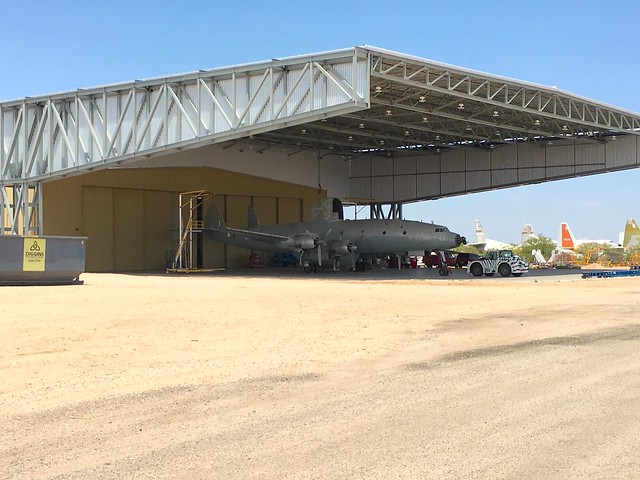
The carport covers the concrete pad in front of the restoration hangar and will enable volunteers to work on aircraft outdoors during the summer heat, while also protecting restoration projects from the elements. Yesterday was the first time I saw an aircraft underneath it, and that’s what prompted me to check it out in person.
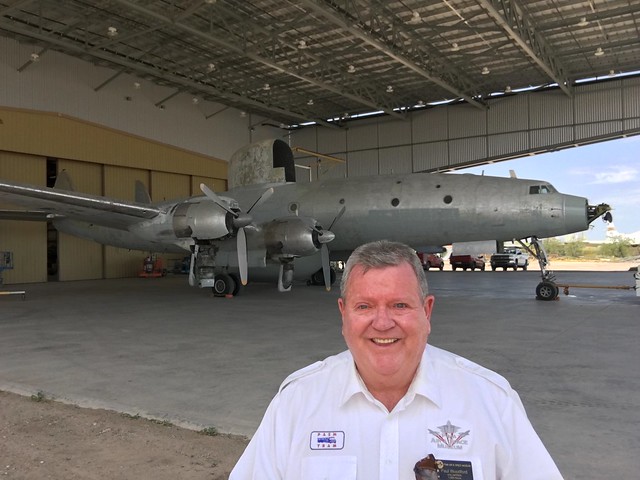
The aircraft is an old USAF EC-121, used for command & control and to track friendly and enemy aircraft during the Vietnam War, a precursor to the AWACS aircraft we fly today. It had been inside the restoration hangar until this week, when they towed it outside. The next step is new paint and markings, and it should soon go on display.
Once they finish work on the EC-121, I imagine the next plane they’ll tow into the shade will be the NB-52A I mentioned earlier. They stripped the paint and markings off it last winter, then parked it in the yard while the carport was being built. This old Buff, the third and last B-52A model built, spent its career in the flight test program at Edwards AFB. Its serial number is 52-0003, so they call it “Balls Three,” but it’s official name is “The High and Mighty One.” It carried and air-launched X-15 rocket planes on 93 of the program’s 199 flights. You can see the X-15 cradle in this photo, mounted under the right wing between the fuselage and inboard engines:
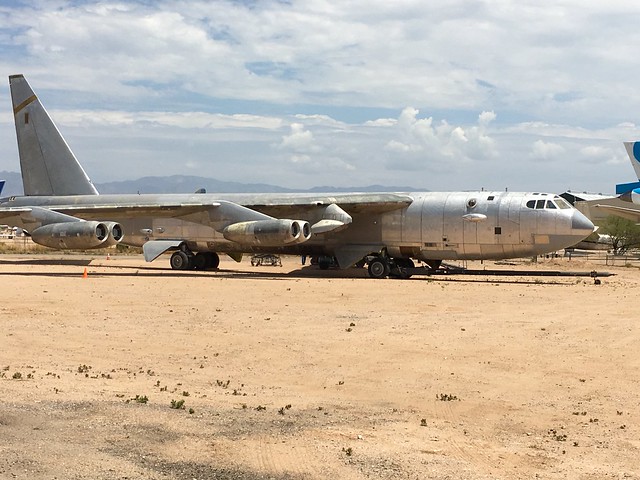
So what else is in the restoration yard at the moment? A number of new intakes awaiting restoration, along with some long-term projects that have been sitting in the desert sun for years. I’ll turn you plane-spotters loose on these photos (click the thumbnails to view the full-sized originals on Flickr, which will allow you to see a lot of additional detail):
 |
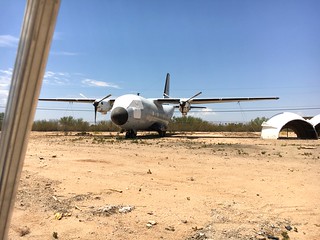 |
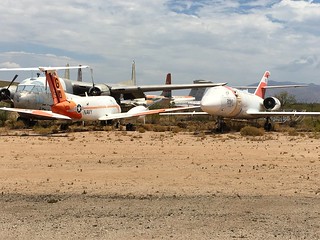 |
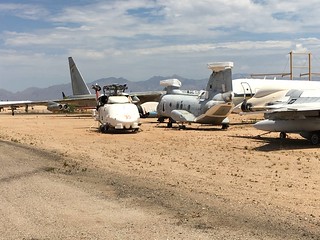 |
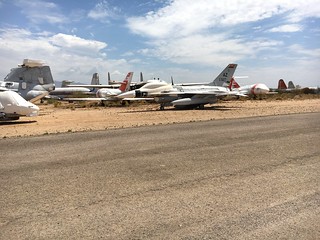 |
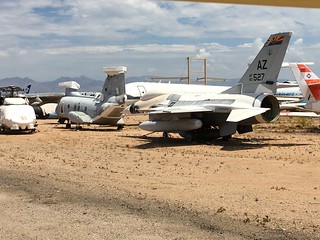 |
I have an interesting tidbit to share on the Boeing 727: per PASM’s website, it is the fifth one built and the first delivered to a customer (United Airlines in October 1963). it was the first 727 to make a commercial flight (March 28, 1964). United donated it to the Smithsonian National Air and Space Museum in 1991. In February 2011 NASM donated it to our museum.
Great photos, Paul. Shows what a golf cart combined with a little chutzpah can get you! 🙂